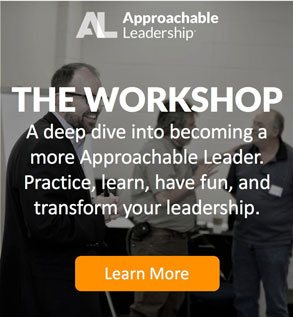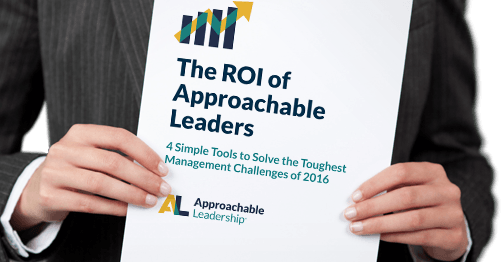Do you ever think, “I just don’t think this person cares about doing good work.” That’s the Villain Assumption.
If you’ve been a leader for any length of time, you know what I’m talking about. Every so often you may be right. But most of the time the problem lies somewhere else. And if you are one of those leaders who seems to always get stuck with poor performers, I’ve got bad news. The problem might be looking at you in the mirror.
If you face a performance issue with a teammate it is important for you to diagnose and help fix it. After all, that’s your job. But the way you go about “fixing” it can have a HUGE impact on whether you solve the problem or make it worse. It all depends on your assumptions. If you assume a team member doesn’t want to do great work you are making the Villain Assumption. And making the Villain Assumption actually creates a steady stream of performance problems!
Why first time leaders make the “Villain Assumption”
First time leaders are especially prone to make the “Villain Assumption.” Most of the time it’s not their fault. It’s in their nature. Let me explain.
When filling new leadership roles at your facility, who makes the cut? Think about it. Is it the ones with proven leadership ability? Or the ones who’ve been there the longest? The ones who you are most familiar with. The guy who has proven he is reliable and can get to work rain or shine. The gal who delivers results over and above everyone else in the department.
(To learn more about how to teach leaders to make the Hero Assumption – plus two other positive assumptions critical to good leadership – check out our Learn and Lead Huddles)
Promoting team members to leadership roles based on these characteristics may seem like a win-win. But it is often a lose-lose. You lose a top producer, so that automatically is hard to replace. Then your new leader struggles. She expects everyone to meet her high (and sometimes inflated) performance standards. This creates expectations that are impossible to reach. When teammates fail to meet the standard the new leader gets frustrated, but she doesn’t have a lot of leadership tools or talent.
Suddenly your previously high performing team is now failing. Teammates are frustrated and bickering. They don’t have a leader who meets them where they are and builds them up from there. Instead they have a leader who is making the Villain Assumption and starts treating the team like a bunch of slackers. Your new leader, who is also frustrated and lacks good tools, falls back on what she knows. She jumps in to show the team “how it’s done.” This just creates more hard feelings. Not good.
In addition to this common “no-win” scenario, leaders face another challenge. Disengagement. Consider this:
50% of new leaders don’t really want the position. And 60% underperform in the first two years.
That’s a sobering statistic. About half the time someone accepts the position because it’s a promotion. They want the pay raise and the chance to move up. They like being acknowledged. But they don’t really want the job, which really hurts their engagement. This in turn hurts their motivation to build up their leadership toolkit. So they struggle. Many don’t make it.
This costs you a talented producer. It creates all kinds of unnecessary drama (and the lost productivity and turnover associated with that). Then you end up right back where you started, struggling to get a new leader in place.
That’s why we must make sure that we choose new leaders not based on their performance as an individual contributor. We must choose them based on their proven leadership qualities.
While there can be a benefit to having a high performer in a leadership role, it is not anywhere near the most important factor. High performance and leadership are two separate sets of traits. They sometimes show up in the same person. But often they don’t. How do you tell whether the person you’re considering is likely to succeed as a leader?
- People who are emotionally intelligent. Who on your team is great at reading the room? Who have you noticed often fills the role of confidant when a coworker is struggling? You want leaders who are self-aware, able to keep their emotions in check, and able to connect with a lot of different personalities.
- People who are good listeners and empathetic. In order to be a great leader, you must be able view your coworkers as humans and not cogs in the machine. Employees work harder for leaders who support them. And they have more confidence to do better work when they have leaders who show understanding.
- People who are patient. To be a great leader is to be a great teacher. And this is bigger than teaching processes. Or how to do a job. It’s about teaching the why behind the job. And it’s about figuring out just what one individual “student” needs to perform his best. Someone who gets easily frustrated when others struggle to “get it” is not going to be a successful leader.
- Look for people who make the Hero Assumption. This is less obvious. But look for people who don’t “run down” teammates who are struggling. People who look at the glass half-full when they notice someone who is having trouble. Someone who pitches in and helps out, not to show off how great they are at performing the job but to help teach others how to up their game. People who are encouraging.
Nobody wakes up in the morning thinking they are the villain in their own story.
This mindset is the how a leader develops the Hero Assumption.
Believe that your employees want to do great work and you are much more likely to see it happen. Believe they don’t care? That’s probably what you’ll see.
This isn’t just a bunch of leadership psycho-babble. The Pygmalion effect is real and has been measured in numerous studies. When you make the Hero Assumption you program your brain to do two very beneficial things. First, your brain subconsciously looks for evidence to prove the assumption true. You know how after you buy something new you start seeing it everywhere? That’s your subconscious at work. Assume your people want to be great and you’ll start noticing it.
More important, your behavior and conversations will change. When you make the Hero Assumption you will automatically approach potentially touchy leader conversations the right way. Your words and behavior will telegraph that you are not judging your teammate. As you look for obstacles that are getting in their way, they will sense that you believe in them. They’ll be ready to roll up their sleeves and prove that your faith in them is justified.
The Hero Assumption is a way to create a self-fulfilling prophesy in your team. So is the Villain Assumption. To paraphrase Henry Ford, whether you believe your team is full of heroes or villains, you’re right. The kind of team you want to lead is up to you!
Have you ever had a leader who made the Hero Assumption or Villain Assumption about you? How did it feel? How did it impact your performance? Let us know in the comments!

















